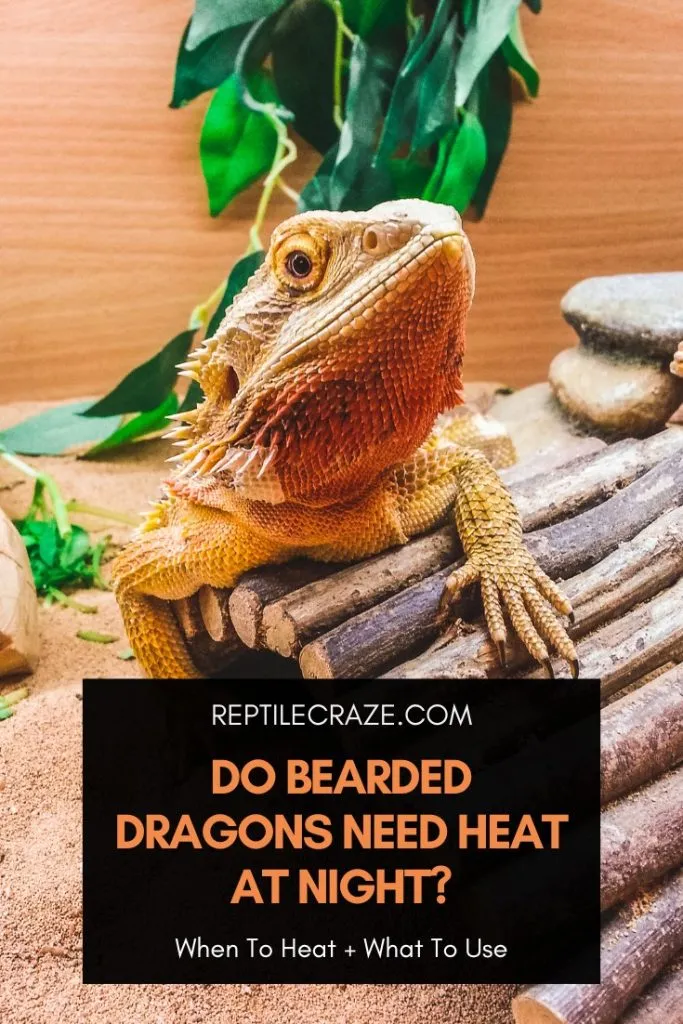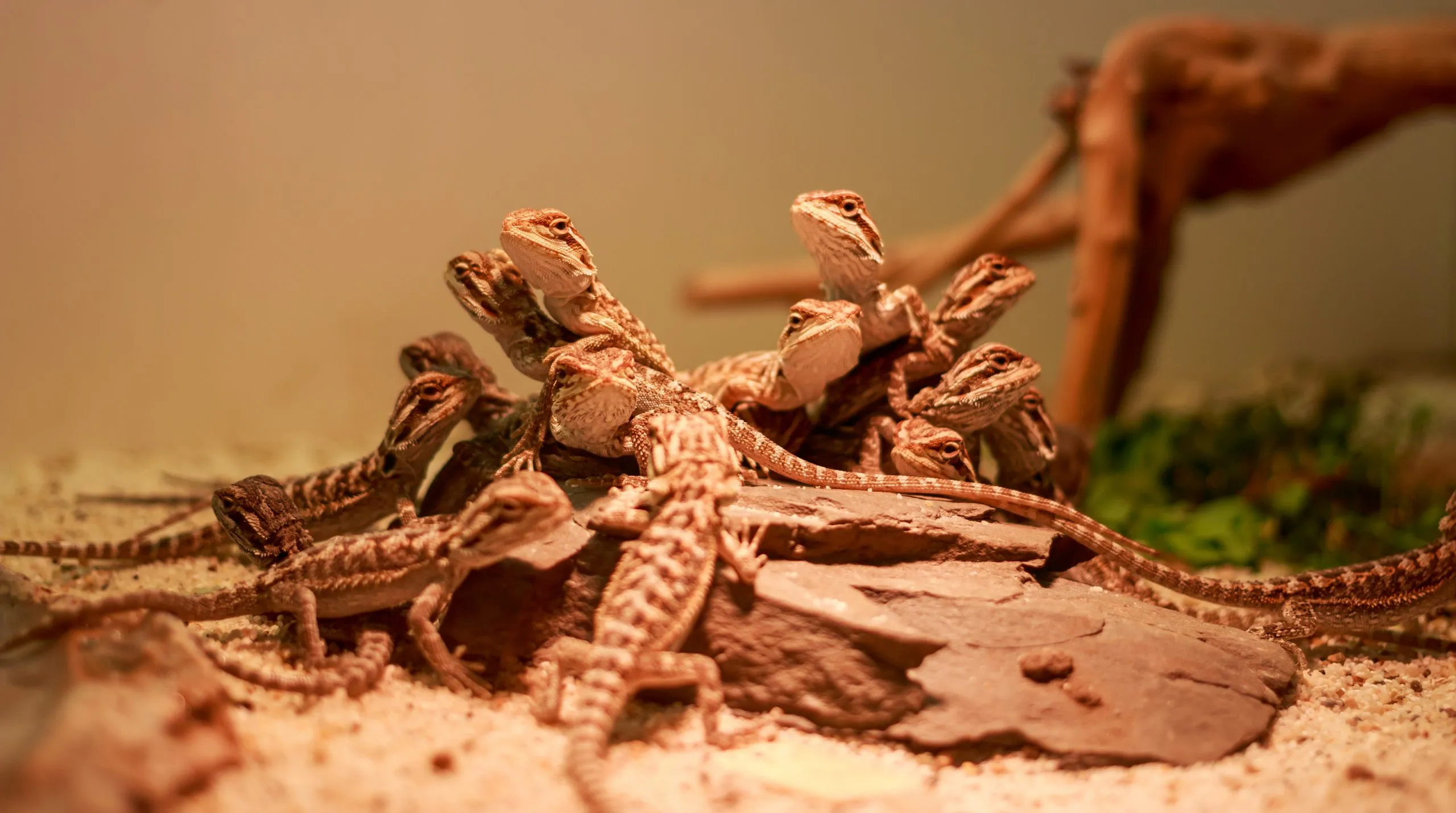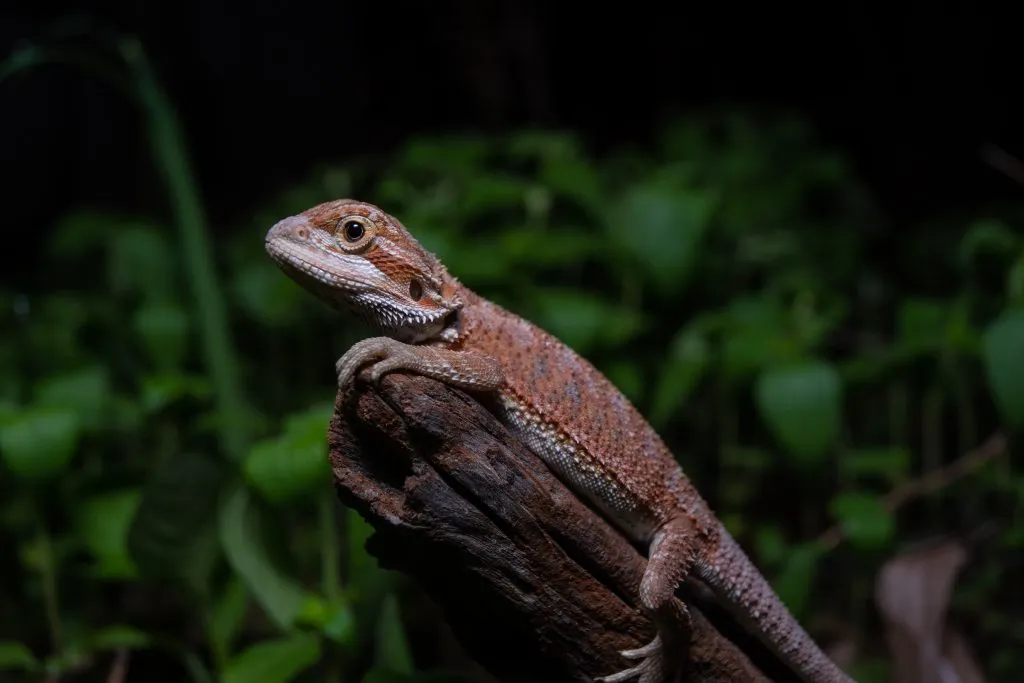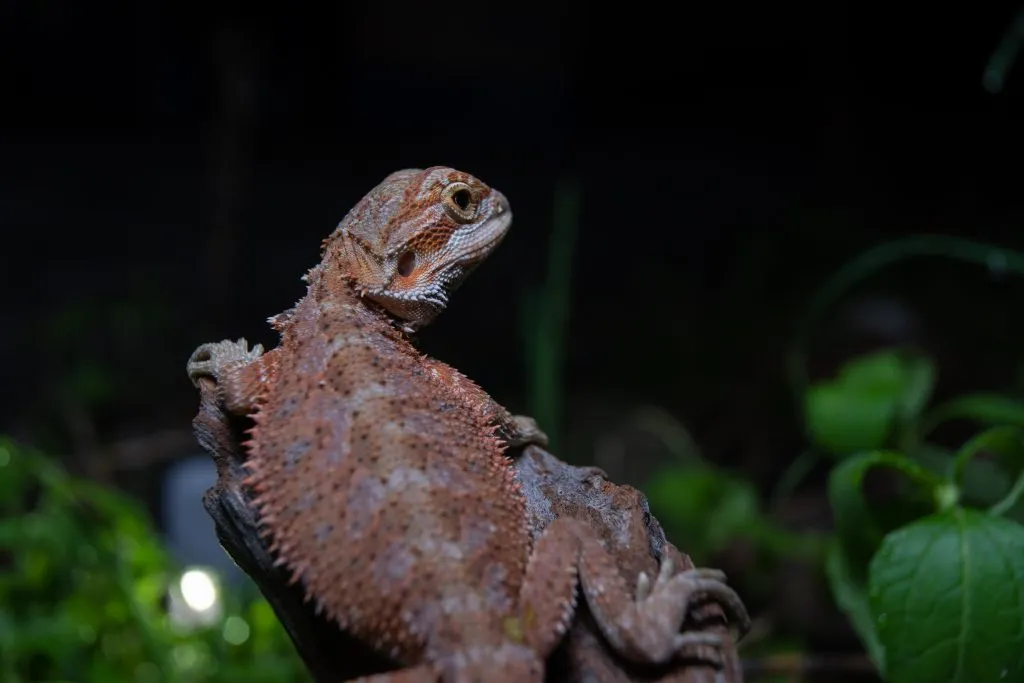
Bearded dragon owners know that the lights in the enclosure should be turned off during the night. Doing so mimics the natural environment of our beardies, but by doing this, are we leaving the
Bearded dragons only need heat at night if the temperature in the
It may come as a surprise that bearded dragons do not need heat at night, but keep in mind that this only works when their daytime temperature is properly observed. Keep on reading to learn more about their heat requirements at night and what you can do when you live in cold areas.
Table of Contents
Do Bearded Dragons Need Heat At Night?
Bearded dragons do not need heat at night, given that they have already received enough heating from daytime and UVB lighting for 14-16 hours during the summer, and 10-12 hours in winter.
The corresponding temperatures of the
When these temperatures are maintained in the daytime, it is guaranteed that the
When you turn off the heat source at night, the temperature of the enclosure will not rapidly drop due to the glass or wood, which acts as an insulator.
Instead, the heat will gradually decrease and will maintain a temperature of 65-75 °F throughout the night until it is time to turn on the lights during the day.
There is also an exception to turning off the heat at night, and that is when you live in a cold area or when you set up the enclosure in an area of the house that easily gets cold, like the basement or an air-conditioned room.
In this case, as the external temperature suddenly drops, the insulation provided by the glass or wood of the enclosure is not enough to maintain heat inside the enclosure for 8-10 hours at night.
By the 3rd hour, the
Do Baby Bearded Dragons Need Heat At Night?

The required ambient temperature of baby bearded dragons is slightly higher than an adult bearded dragon. They have the following heating requirements:
- Basking spot: 95-110 °F
- Cool area: 80-95 °F
Given the above heating requirements, it is safe to say that even without heating at night (if you do not live in a cold area) the
The safest night temperature for baby bearded dragons is between 72-80 °F. They can still withstand 70 °F, but if you notice that the
Also read: Do bearded dragons need a heat lamp? Are heat mats better?
Bearded Dragon Temperature At Night
A bearded dragon can tolerate a maximum temperature drop of 65 °F during the night.
Any temperature below 65 °F at night can be dangerous to your bearded dragon as this could lead to a respiratory illness or may even trigger brumation even when it is not the proper time to do so.
All this talk about underheating the
Therefore, they are tougher when it comes to tolerating extreme temperatures than they seem just as long as you give them the capacity to properly thermoregulate.
As such, it is our duty to mimic their environment in the wild as much as possible, even in captivity.
This study proves that bearded dragons do not have different thermal requirements even when they have smaller or fewer scales.
The same goes for age and health disposition. They can easily adapt to the environment just as long as we give them the opportunity to do so.

How To Keep Bearded Dragons Warm At Night
If you live in an area that does not go below 65 °F at night, then you do not need to provide supplemental heating for your bearded dragon.
In order to be sure, it is best to use a thermometer to check the temperature in the
This infrared thermometer is recommended due to its accuracy and wide temperature range. We use it in all our reviews and for measuring the temperatures in our personal reptile tanks.
We will not be including lights in the recommendations as any type of light whether it is a blue light or an infrared bulb may disrupt the night cycle of your bearded dragon.
These lights may be good for viewing or might even help with heating, but they will cause more harm than good to your beardies.
Tip: Read our article here to learn why you must turn off all lights in your bearded dragon
tank at night.
1. Ceramic Heat Emitters
You may mistake these heat emitters as a type of light as their design is much like a bulb. However, they do not emit light, they only emit heat.
It has an electric wire that is coiled inside which then produces heat on the entire bulb. What is so special about this is that it can take power from any light socket and turn that into heat.
Further, ceramic is a good thermal conductor thus it will not be easily affected by the sudden drop in temperature.
How To Set Up
You can screw the heat emitter to any light socket. Some owners simply swap the basking light with the heat emitter at nighttime.
You can also screw this onto a slot that you are not using if you have a dual dome lamp fixture. One slot can be for daytime light while the other is a heat emitter.
This ceramic heat emitter heats up fast and fits into any standard E26 lamp base. Also, in our guide on the best heat lamps for beardies, we list another heat emitter that does the job perfectly.
Never use heat rocks. These may burn your bearded dragons when they accidentally come into contact with it and it turns out to be too hot.
2. Heating Mats
Heating mats are a great option if you are worried about possibly burning your bearded dragon. These are placed outside the enclosure. You can either attach it at the bottom of the enclosure or at the sides.
If you decide to go this route, just be wise in the placement of the heating mat so as not to come into contact with any flammable objects.
How To Set Up
Just place the heating map on your desired placement (it is recommended to place it under the
This heating mat comes with a digital thermostat. It also has rubber feet to elevate it a bit from the surface to let some excess heat escape.
Important note: You should still be wary of overheating the enclosure when using supplemental heating at night. The nighttime temperature should not reach the daytime temperature as this will not let your bearded dragon to thermoregulate properly. It is wise to make use of a timer.
3. Heating Cables
Heating cables are also good insulators and the best thing about them is the fact that they are water-resistant.
How To Set Up
You can place it in coils or loops inside the enclosure. You can also use it like a heating mat when you attach it outside the enclosure and secure it with electrical tape. You just need to plug it into an outlet to make it work.
You can check out this heating cable for an inexpensive option.
Conclusion

Most bearded dragons do not need heat at night, especially when they reach their optimal temperature level during the day. Even without heating at night, the
The exception is when you live in an area that gets cold easily or when you place the enclosure in an area of the house that is cold.
In this case, you need to use supplemental heating like ceramic heat emitters, heating mats, and heating cables.
- Eastern Rat Snake: Nature’s Pest Control and Fascinating Reptile - September 20, 2024
- Eastern Racer: The Fast and Agile Snake - September 19, 2024
- The Eastern Indigo Snake: The Majestic, Non-Venomous Hunter of the Southeast - September 18, 2024
